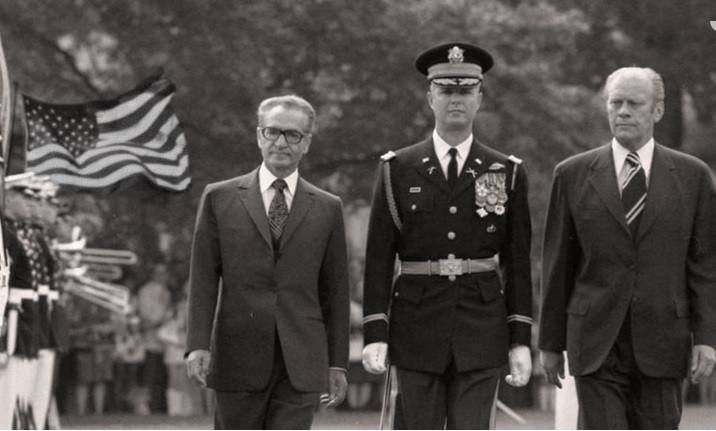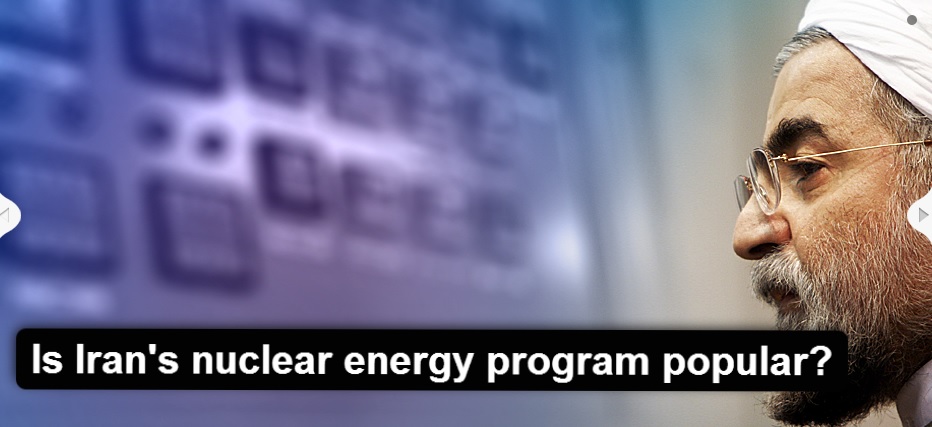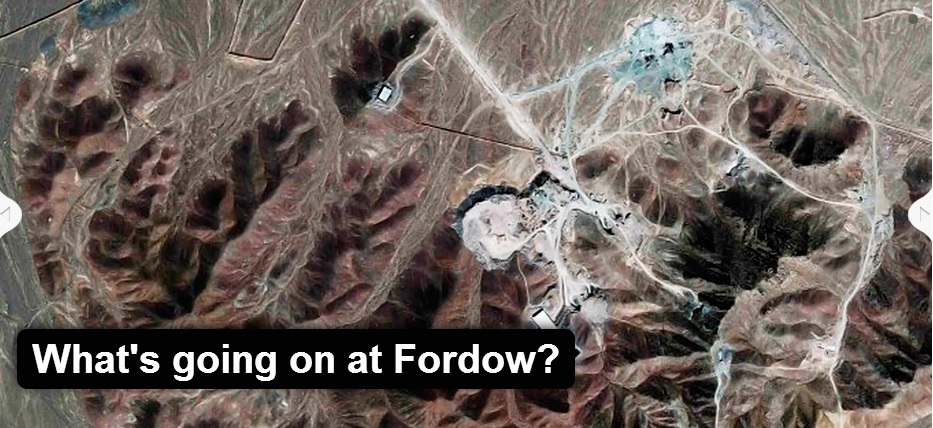Tehran has a launched sophisticated new website, NuclearEnergy.ir, to convince the world – in English – that its nuclear energy program is both peaceful and necessary for modern development, despite Iran’s vast oil and gas resources. The Islamic Republic’s ambitious public diplomacy campaign confronts the most controversial issues head on in an attempt, it claims, to be transparent.

The site covers eight broad aspects of Iran’s nuclear program, from public opinion to the country’s motives for attaining atomic energy. One section counters allegations that Tehran’s nuclear program has military ambitions to build the world’s deadliest weapon. The website argues that many accusations were politically motivated or unwarranted.
Another section outlines the terms discussed during each round of nuclear talks held since 2003. In several instances, the website claims that Iran upheld commitments while Western powers did not.
The site also includes “Frequently Asked Questions” answers to more than 70 simple propositions, such as “What is the aim of Iran’s development of nuclear technology?” and “How do ordinary Iranians feel about their country’s nuclear energy program?”
The website, launched just before the November nuclear talks in Geneva, appears to be connected to the government. The site’s Twitter account has frequently tweeted remarks by Foreign Minister Mohammad Javad Zarif on the nuclear issue. President Hassan Rouhani’s office has also retweeted many of its postings. The following is a rundown of the site’s offerings.
Motives
The extensive section cites a quickly growing population, an increasing demand for electricity and Iran’s need to replace oil and gas with other energy sources:
“Iran’s current population is estimated at nearly 80 million, with most below the age of 30. In comparison, the country had a population of 33 million in the mid-1970s, when it contracted the construction of its first nuclear power plant to West Germany. Projections show Iran’s population will likely reach 100 million by 2025. Naturally, along with the increase in population comes a rise in demand for electricity.”

“Iran’s electricity needs are currently met by the use of traditional energy sources such as oil, natural gas and coal. However, Iran can barely keep up with its electricity consumption using these finite resources. If natural gas and oil are not replaced by another energy source, and crude production is not significantly increased, Iran may become a net importer of oil over the next decade. Therefore, the Iranian government has emphasized the development of alternative energy sources.
“One alternative is nuclear power – an energy source which can produce more electricity than any other renewable option such as solar or wind power. Today, nuclear power accounts for only one percent of Iran’s total electricity generation. Iran, however, hopes to change this and plans to produce 20,000 megawatts of nuclear-generated electricity by 2020. If successful, this could save it 190 million barrels of crude oil every year, tantamount to an annual saving of nearly $14 billion.”
Energy Security
“Iran’s efforts to gain access to nuclear technology date back to 1957, when it signed an agreement with the United States on cooperation in research on the peaceful uses of nuclear energy. A decade later, in 1967, the United States supplied Iran with its first nuclear reactor, the Tehran Research Reactor, which is still in use. Washington also provided Iran with weapons-grade uranium to use as fuel for the 5-megawatt research reactor.”
“In 1976, US President Gerald Ford went as far as offering Iran the opportunity to buy and operate an American-built multinational reprocessing facility to extract plutonium from nuclear fuel. The deal was for a complete nuclear fuel cycle.”
“But in the aftermath of Iran’s Islamic Revolution in 1979, the United States and its European allies ended their efforts to help Tehran develop its nuclear energy program… The United States, meanwhile, stopped supplying fuel for the Tehran Research Reactor, effectively forcing the closure of the American-supplied facility for a number of years. These developments convinced Iran that foreign supplies of nuclear fuel were unreliable at best and that it had no choice but to produce its own enriched uranium.”
Timelines
The site also offers a detailed timeline on Iran’s energy program dating back to the 1950s under the monarch. It also chronicles the key U.S. role in providing the first research reactor. Click here to view it.


The site offers another detailed timeline with the terms under discussion for all negotiations dating to 2003. Click here for the chronology.

The website provides an outline of public opinion polls in Iran about the nuclear energy program since 2006.
Facilities
One section outlines the activities at each of Iran’s major nuclear facilities. Click here for the rundown.
“Iran produces UF6 enriched up to 19.75 percent at the Shahid Masoud Alimohammadi Fuel Enrichment Plant. The site, which is also known Fordow, is a centrifuge enrichment plant built deep underground near the city of Qom. The area is located some 100 km from the Iranian capital, Tehran. In 2009, Iran informedthe IAEA about its plans to build the facility.”

“Fordow was completed in 2011 and is designed to hold as many as 2,976 centrifuges, divided between Unit 1 and Unit 2. According to the IAEA, Iran had installed 2,784 centrifuges at Fordow as of August 2013, though only around a quarter of these centrifuges were in operation at the time.
“As of August 2013, Iran had produced about 195 kg of UF6 enriched up to 19.75 percent at Fordow since the inauguration of the plant. The site is named after the Iranian scientist Masoud Alimohammadi, who was assassinated in Tehran in 2010. Iranian authorities blame his assassination on the United States and Israel.”
Iran’s Rights and Obligations

One section of the site covers Iran’s rights and obligations under international law and U.N. agreements. It also details Supreme Leader Ayatollah Ali Khamenei’s 2003 fatwa (religious edict) against nuclear weapons. Click here for the rundown.
“Ayatollah Khomeini’s successor as Iran’s Leader, Ayatollah Ali Khamenei, has also pronounced a fatwa forbidding the production, stockpiling and use of weapons of mass destruction, and specifically nuclear arms. He first issued the fatwa in October 2003 but has reiterated it several times ever since in an effort to underline the high significance of the issue.
“On November 5th 2004, in a Friday prayers sermon, Ayatollah Khamenei is quoted as having said: “No sir, we are not seeking to have nuclear weapons,” and added that to “manufacture, possess or use them, that all poses a problem. I have expressed my religious convictions about this, and everyone knows it.”
 “In another speech delivered in June 2009, Ayatollah Khamenei repeated once again, “[t]he Iranian people and their officials have declared time and again that the nuclear weapon is religiously forbidden (Haram) in Islam and they do not have such a weapon. But the Western countries and America in particular through false propaganda claim that Iran seeks to build nuclear bombs which is totally false and a breach of the legitimate rights of the Iranian nation.”
“In another speech delivered in June 2009, Ayatollah Khamenei repeated once again, “[t]he Iranian people and their officials have declared time and again that the nuclear weapon is religiously forbidden (Haram) in Islam and they do not have such a weapon. But the Western countries and America in particular through false propaganda claim that Iran seeks to build nuclear bombs which is totally false and a breach of the legitimate rights of the Iranian nation.”
